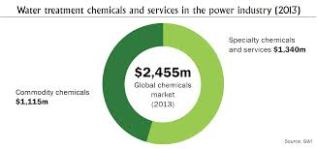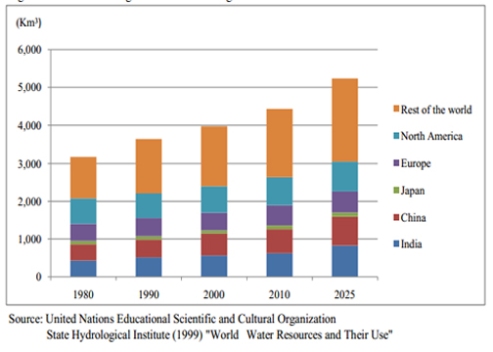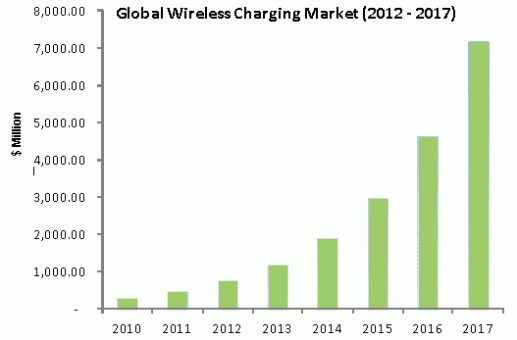
Global warming and other environmental issues have been rising off lately. Few chemicals used in detergents and soaps have harmful side effects. Many industries are finding ways to improve their performance to become more eco-friendly. A leading distributor of cleaning and supplies, has recently introduced the Eco-Green series of green chemicals. The term ‘Green Chemicals’ implies that these chemicals are easily and quickly biodegradable and do not have harmful side effects. They are derived from plants and vegetables and make use of the chemical and colloidal properties of certain plant extracts. The green chemicals easily outscore the detergent and soaps that make use of artificial chemicals. The green cleaning products consists of small nano-sized particles that can filter into any surface and disrupt the bonding between stains and the surface.
Construction chemicals are the chemicals that are added in specific formulations with the cement or concrete during construction to meet the functional, aesthetic, or design requirements of any infrastructure. Green chemicals are the chemicals that do not contain the components that are harmful to human health or environment. Green chemicals are increasingly preferred in construction industry now-a-days due to their numerous benefits such as strength, increased durability, color, chemical resistance, minimum use of water and cement, ability to withstand climatic changes, and protection from natural factors such as fire and heat among others. These are widely used in the construction of residential, industrial, commercial, and other infrastructure projects.
Green chemicals can be categorized into three major types as
• Concrete admixtures
• Adhesives and sealants
• Flame retardants
DRIVERS OF GREEN CHEMICALS MARKET:
• New technologies
• Regulatory factors
• Consumer preference
• Economic factors
The primary factor is to minimize waste in the chemical production process, replacement of existing products with less toxic alternatives and to shift to renewable and non-petroleum stock.
Rapid advances in biotechnology has created a new tool kit for the manipulation of organisms to produce industrially useful component with great efficiency and minimum waste. Rising price of petroleum has fuelled interest and investment in finding alternative renewable feed stocks.
International Council of Chemical Association is a global chemical industry to initiate on improving health, environmental performance, security enhancement and communication to stakeholders about products and processes. The Green Chemical sector is still in its early growth stage with tremendous future potential.
STRENGTHS:
1. Savings
• Reduction in regulatory & compliance cost of ETP
• Saving in water consumption
2. Process
• Increased plant efficiency
• Reduced utility cost
3. Output
• Product differentiation for finished product
4. Social
• Community well being
• To showcase “Green efforts”
5. Human health:
• Cleaner air: Less release of hazardous chemicals to air leading to less damage to lungs
• Cleaner water: less release of hazardous chemical wastes to water leading to cleaner drinking and recreational water
• Increased safety for workers in the chemical industry; less use of toxic materials; less personal protective equipment required; less potential for accidents
• Safer consumer products of all types: new, safer products will become available for purchase; some products will be made with less waste; some products will be replacements for less safe products
• Safer food: elimination of persistent toxic chemicals that can enter the food chain; safer pesticides that are toxic only to specific pests and degrade rapidly after use
• Less exposure to such toxic chemicals as endocrine disruptors
6. Environment:
• Many chemicals end up in the environment by intentional release during the unintended releases or by disposal. Green chemicals either degrade to innocuous products or are recovered for further use
•Plants and animals suffer less harm from toxic chemicals in the environment
• Lower potential for global warming, ozone depletion, and smog formation
• Less chemical disruption of ecosystems
• Less use of landfills, especially hazardous waste landfills
7. Economy and business:
• Higher yields for chemical reactions, consuming smaller amounts of feedstock to obtain the same amount of product
• Fewer synthetic steps, often allowing faster manufacturing of products, increasing plant capacity, and saving energy and water
• Reduced waste, eliminating costly remediation, hazardous waste disposal, and end-of-the-pipe treatments
• Allow replacement of a purchased feedstock by a waste product
• Better performance so that less product is needed to achieve the same function
• Reduced use of petroleum products, slowing their depletion and avoiding their hazards and price fluctuations
• Reduced manufacturing plant size or footprint through increased throughput
Improved competitiveness of chemical manufacturers and their customers
WEAKNESS:
• The idea that the chemical industry will one day rely only on renewable feed stocks to replace fossil fuel-based ones.
• Using only renewables would simply take up too much land to produce the necessary material. There is potential for Brazilian sugar cane and fibers.
• The chemicals industry is highly efficient at using oil and gas feed stocks.
• Last month BASF formed a joint venture with Denmark-based biotechnology firm Novozymes and US agribusiness giant Cargill to produce bio-based acrylic acid.
CONCLUSION:
There is a potential to bring society and science closer. Innovations backed by sound policies and regulations will speed up large-scale adoption, even though initially costs may go up. Gradually costs will come down over time. But greening chemistry alone will not be enough. Industry needs to share in real time the pros and cons of the greener choices and not just promote the positives. People inside the fence need to include and engage folks outside the fence by explaining complex and evolving scientific information in a language that is understandable to the average citizen. Those outside the fence need to understand the difficulties of the folks inside the fence, and ultimately, learn to trust them. Open communications and dialogue should be encouraged. .

Pike Research, meanwhile, reported that the use of green chemistry is expected to save the chemical industry $65.5bn by 2020. Pike Research included in their definition of green chemistry pathways and industrial activities such as waste minimization in the chemical production process, replacement of existing products with less toxic alternatives, and the shift to renewable, non-petroleum based feed stocks.
Green chemistry markets, just represents a market opportunity of $2.8bn in 2011 reaching to $98.5bn by 2020. By 2020, it is expected that the total chemical industry will expand to $5.3 trillion in annual revenues.
In July, BCC Research reported the global market for green technologies is expected to be worth $312bn in 2015 from $200bn in 2010, showing a growth rate of 9.2%/year.
Rise in the infrastructure developments across the globe due to urbanization is in full swing. Large scale investments in public and private sectors are driving the demand for the chemical and materials required in construction. Governments are undertaking large scale projects such as construction of road lines, highways, and public infrastructure projects. Contractors and builders are considerably cutting down on under construction time by making use of new chemical technologies and construction aids.
This is leading to the reduction in construction expenditure and improvement in the quality of work. Although, green chemical technologies are currently used in large scale infrastructure developments such as highways and bridges, they are increasingly accepted for use in residential applications. It is expected that concrete admixtures will be used in the construction of smaller infrastructures too in near future.




















